#wood thrush song
Text
Mossy stones and wood thrush song this morning.
6K notes
·
View notes
Text

The Natural History of the Garden. Written by Michael Chinery. 1978.
#birds#sparrows#house sparrows#thrushes#song thrushes#mistle thrushes#dunnocks#wrens#finches#bullfinches#pigeons#european robins#blackbirds#chaffinches#goldfinches#greenfinches#wood pigeons
138 notes
·
View notes
Photo

Song Thrush - Léo Paul Robert , 1880.
Swiss, 1851-1923
44.5 x 34 cm.
87 notes
·
View notes
Text
I think when I get to garden of hope pik3 (morning) I will actually do one of those uncontrollably shed a tear things. lame!
3 notes
·
View notes
Text
huge respect to @myxinidaes for reblogging that post with 100 birds
#ok im gonna try to list 100 birds. house sparrow song sparrow fox sparrow white-throated sparrow dark-eyed junco#robin. ovenbird. hermit thrush. carolina wren. cardinal#carolina chickadee. house finch. purple finch. goldfinch. white-breasted nuthatch#red-breasted nuthatch. hooded merganser. american coot. wood duck. mallard duck#surf scoter. ruddy duck. black duck. northern shoveler. common loon#crow. fish crow. raven. turkey vulture. bald eagle#feral pigeon. mourning dove. turkey. quail. AMERICAN WOODCOCK#solitary sandpiper. herring gull. great black-backed gull. piping plover. killdeer#yellow-rumped warbler. pine warbler. palm warbler. black and white warbler. i cant think of a fifth warbler. red tailed hawk#cooper's hawk. osprey. barn swallow. tree swallow. blue jay#peacock. egyptian goose. peregrine falcon. merlin. canadian goose#green heron. starting to struggle here. flamingo. skua. albatross. great blue heron#barn owl - snowy owl - great horned owl - barred owl - WHAT was that little owl in central park called - uhhh mandarin duck#chicken. california condor. rose finch (there are many but i dont remember any of the weirder species). adelie penguin. emperor penguin#northern mockingbird.. starling.. grackle.. african gray parrot.. monk parakeet#stellar's jay ... baltimore oriole.. argh what's the other oriole we get. DOWNY WOODPECKER.. hairy woodpecker... pileated woodpecker#red-headed woodpecker. red-bellied woodpecker. ruby-throated hummingbird. scarlet macaw. whooping crane#whippoorwill. snowy egret. great egret. european robin. bird of paradise#there's a warbler that's just 'yellow' right? yellow warbler? cormorant...#struggling with some where i cant remember the exact name like was it a 'double crested' cormorant or something else.#zebra finch .. blue-footed booby... pelican....#australian magpie. The Other Magpie. ibis (nonspecific). potoo. EASTERN BLUEBIRDDDDDD !!!#ceruleanrambling#now i can go read yours
17 notes
·
View notes
Photo

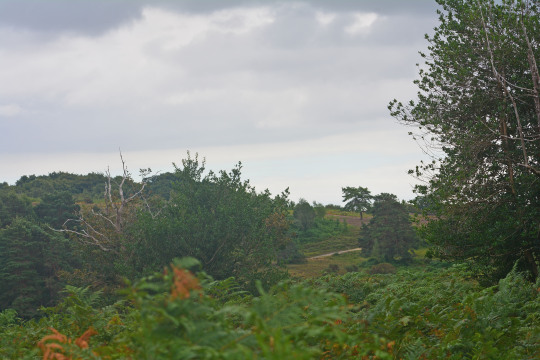
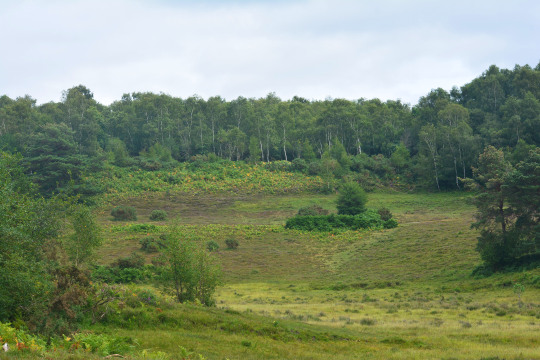


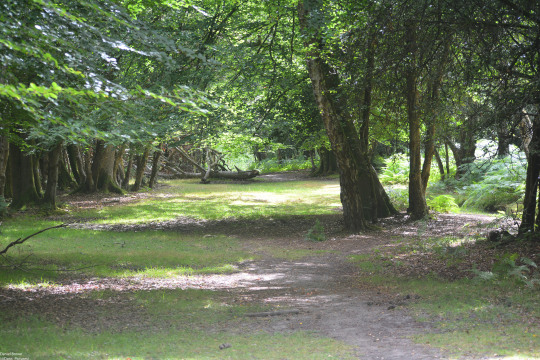

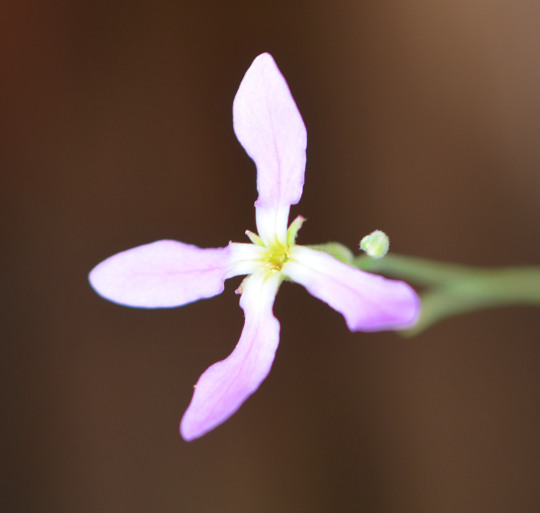
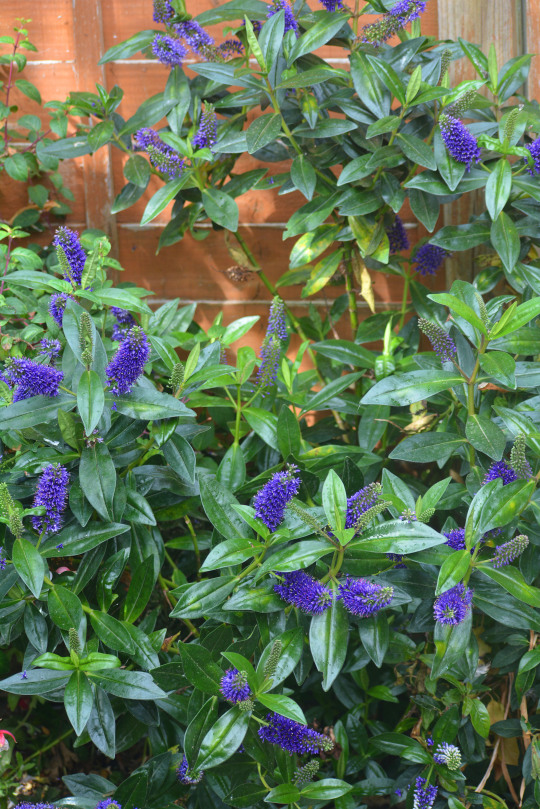

31/07/2022-Acres Down in the New Forest and home
We had a nice walk in the woods and a bit of bog and heath at Acres Down this afternoon, it was great to see the dark green of the vegetation on a variety of trees and summery full leaf scenes with a bit of rain and sunshine briefly too. It was nice to see rowan berries and a lovely little stream. I took the second, third, fifth and sixth pictures in this photoset of views here today.
It was a good walk for birds with lovely views of a few Song Thrush which was great one of them which I took the first picture in this photoset of and enjoyed seeing is a youngster I believe which was nice to see, splendid Spotted Flycatcher seen in the woods a bird I always enjoy seeing, a Redstart quickly, Wren, Blue Tit and Chaffinch.
There were some nice plants on the walk as my Mum showed me the stunning sundew in the bog she found here the other week. An enigmatic flower I have wanted to see for a while that was so pretty to see with the moisture clinging to it. I took the fourth picture in this photoset of it. We also found some bog asphodel leaves another she had seen the other week here a smashing plant that I was excited to see too in the bog. Two big flower moments in another amazing year of flowers for me so far. Key for the habitat tormentil, buttercup, bramble flower and nice different bits of heather seen in isolation and coming together starting to form the purple carpet which was beautiful to see were also nice to see this afternoon. I also enjoyed seeing a nice mushroom. I liked seeing New Forest ponies on the way home.
At home today I enjoyed seeing lots of Starlings in the back garden, a bright coloured bird of the moment in home areas Lesser Black-backed Gull out the back and also one atop our roof with a line of House Sparrows on the diagonal below it which looked great as we left to go out, three Collared Doves lined up out the back as we got in which I took the seventh picture in this photoset of and the Greylag Geese on the green out the front again tonight being fed I believe. I also liked seeing red geraniums, a fair bit of purple hebe now as shown in the tenth picture in this photoset I’ve rarely seen this much in flower since I’ve known this plant since 2020 the plant has possibly grown a bit over the years, sedum, fuchsia, sunflower as the tenth picture in this photoset shows, sweet William, Black-eyed Susan, poppy, campion and possible radish in shown in the eighth picture in this photoset in the back garden and other flowers, with some lovely yellow flowers on the balcony covered in raindrops kissed by the sun post shower earlier today. It was nice to see some pretty sky scenes tonight towards sunset and before as the blue sky and sun really poked through some interesting shapes in the sky with fluffy clouds this evening it was great to see the trees out the front sun kissed and see a nice crescent moon tonight.
Well fittingly its been an amazing weekend of wildlife watching and walks for me with many great photo opportunities a key weekend of my year in what is one of the most memorable weekends of my life and I am sure I will always say that looking back now that I have seen an England senior football team win a tournament! I was hooked on watching a gripping final to Euro 2022 at Wembley this evening a thrilling tournament its been an honour to have in this country, and its been incredible to see this inspiring England team break records and play brilliant football. I am so proud of this team for bringing the trophy home, this is such a euphoric feeling. Congratulations to all involved. I hope everyone has a nice week.
#england#uk#world#nature#acres down#sundew#sunflower#bog#bog asphodel#water#woods#river#sun#new forest#song thrush#spotted flycatcher#wren#blue tit#birds#birdwatching#walking#weekend#photos#photography#poppy#sweet William#colours#hebe#colourful#fuchsia
5 notes
·
View notes
Text
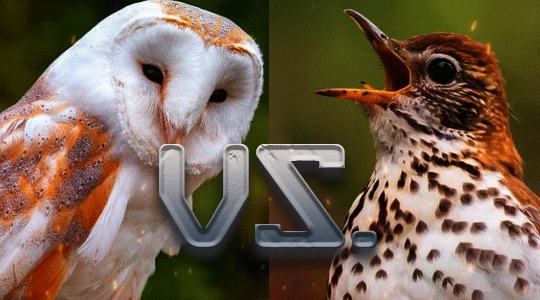
MOST ICONIC BIRD CALL BRACKET: ROUND ONE: BARN OWL vs. WOOD THRUSH
IN THE BLUE CORNER, we have a wrestler with eerie beauty and deadly grace, the silent assassin of the ring, the barn owl!
despite its soft plumage and its sweet, heart-shaped face, this is an opponent that demands respect. the barn owl is incredibly agile, able to fly silently through the air and strike its opponents with deadly precision. you might think that, like any owl, the barn owl will hoot - but if you run with that assumption, you'll be in for a nasty surprise when you hear that piercing, ear-shattering shriek.
IN THE RED CORNER, it's time to face the music. hailing from the lush forests of north america, it's the wood thrush!
this is a fierce opponent that's been training for this competition its entire life. this bird is able to sing not one, but two notes at the same time, giving its song an ethereal, flute-like quality. the wood thrush is here tonight to prove that it's not just a pretty face - this is a true championship contender. get ready, because the wood thrush is here to sing his way to victory!
531 notes
·
View notes
Text
Aesthetic sensibilities are deeply subjective, and hard to acknowledge and analyse clearly. They take root in us from the moment we’re born. They bind us to a particular view of the landscape, something we begin to think of as ‘natural’ or, at least, benign. What we see as children, particularly where we grow up, becomes what we want to continue to see, and what we want our children to see. Nostalgia, and the sense of security that nostalgia brings, binds us to the familiar. We are persuaded, too, by our own absorption in this aesthetic that what we are seeing has been here for ever. We believe the countryside around us, or something very similar to it, has persisted for centuries and the wildlife within it, if not exactly the same, is at least a fair representation of what has been here for centuries. But the ecological processes of the past are hard for the layman – and often even conservation professionals – to grasp.
We are blinded by the immediacy of the present. We look at the landscape and see what is there, not what is missing. And if we do appreciate some sort of ecological loss and change, we tend to go only as far back as our childhood memories, or the memories of our parents or grandparents who tell us ‘there used to be hundreds of lapwings in my day’, ‘skylarks and song thrushes were ten-a-penny’, ‘the fields round here used to be red with poppies and blue with cornflowers’, ‘cod was the poor man’s fish when I was a nipper’. We are blind to the fact that in our grandparents’ grandparents’ day there would have been species-rich wildflower meadows in every parish and coppice woods teeming with butterflies. They would have heard corncrakes and bitterns, seen clouds of turtle doves, thousands of lapwings and hundreds more skylarks. A mere four generations ago they knew rivers swimming with burbot – now extinct in Britain – and eels, and their summer nights were peppered with bats and moths and glow-worms. Their grandparents, in turn, saw nightjars settling on dusty country lanes and even hawking for moths around the street lamps in towns, and spotted flycatchers in every orchard, and meadow pipits everywhere from salt-flats to the crowns of mountains. They saw banks of giant cod and migrating tuna in British waters. They saw our muddy North Sea clear as gin, filtered by oyster beds as large as Wales. And their grandparents, in turn, living at the time of the last beaver in Britain, would have known great bustards, and watched shoals of herring five miles long and three miles broad migrating within sight of the shore, chased by schools of dolphins and sperm whales and the occasional great white shark. We don’t have to look too deeply into the history books, into contemporary accounts, for scenes dramatically different to our own to be normal. Yet we live in denial of these catastrophic losses.
Isabella Tree, Wilding: The Return of Nature to a British Farm
59 notes
·
View notes
Text
(Unnecessarily complicated reason for poll below poll)
So, a prominent character in the Silmarillion is Lúthien. She is the precious only daughter of a powerful elf king and a demi-goddess, and she's very beautiful and good at dancing and sings like a bird and is 100% Tolkien's insert character for his wife (awww). She is also called Tinúviel, which means Nightingale.
Later, when Aragorn first meets Arwen, he calls her Tinúviel in reference to a famous song about Lúthien's beauty and grace. Arwen is all, lol, fun fact, that's my great-great-grandma you're talking about, makes sense. (She kindly does not mention that Lúthien is also Aragorn's ancestor if you go back far enough.) So if you haven't read the Silm (sensible of you), you can just picture Arwen when answering this poll.
Now, hypothetically, someone might be trying to write a fanfiction in which Legolas is compared to Lúthien for assorted reasons (mostly because it's funny). But this potential author is not really up on birds, particularly song birds, and so they are uncertain what the best/funniest bird comparison for Legolas would be. This possible author might desire the wisdom of tumblr on the topic, but prefer to keep things hypothetical, because heaven forbid they commit to creating anything.
I assume you understand.
tl;dr If Gimli came upon Legolas in the woods and had to compare him to a bird, what would be the most appropriate bird for him to choose? Bonus points if Thranduil is highly offended or gratified by the choice.
PS: Any Tolkien scholars in the audience want to weigh in on whether Jirt was at all influenced by the Hans Christian Anderson fairy tale The Nightingale? Since I have recently learned just how much of LotR is referential I keep wondering about these things.
#lotr#lord of the rings#poll#polls#legolas#luthien#birds#yes the lark is totally a Romeo and Juliet reference#gull not included because that's just mean
79 notes
·
View notes
Text
I Got bored one time awhile ago and made a list of every prefix plus some into organised sections so I thought I might as well share.
All the ones that aren’t cannon to warriors, yet at lest are bold
Describing names
Colours: red, russet, copper, golden, amber, yellow, green, blue, violet, pink, white, gray, black, ebony, dark, pale, silver, brown, tawny, fallow
Pattern, Texture + Size: spot/ted, dapple, speckle, freckle, brindle, patch, mottle, ragged, tangle, kink, bristle, fuzzy, curl/y, wooly, soft, sleek, little, tiny, small, slight, short, tall, long, big, heavy, crooked, broken, half, stumpy, shred, torn, jagged
Actions + Character: flip, pounce, bounce, jump, hop, crouch, down, low, drift, flail, strike, running, fidget, mumble, whistle, snap, sneeze, shiver/ing, shining, flutter, fallen, lost, rush, fleet, quick, shy, sweet, brave, loud, quiet, wild, hope, wish,
Other: claw, whisker, dead, odd, one, spike, fringe, echo, song, hallow, haven
Elements
Time + Weather: day, night, dusk, dawn, morning, sky, sun/ny, moon, storm, lightning, thunder, cloud/y, mist/y, fog, snow, blizzard, ice, frost, dew, drizzle, rain, clear, wind, breeze, gale, shadow, shade, bright, light,
Earth/Water/Fire names: stone, rock, boulder, slate, flint, pebble, gravel, sand/y, dust, mud/dy, meadow, hill, rubble, river, ripple, whorl, float, rapid, shimmer, lake, swamp, marsh, wave, wet, bubbling, splash, puddle, pool, creek, fire, flame, flicker, flash, blaze, scorch, ember, spark, ash, soot, cinder, smoke
Plants
Trees: alder, aspen, birch, beech, cedar, cypress, pine, elm, willow, oak, larch, maple, bay, rowan, timber, bark, log, wood, twig, acorn, cone, seed, spire
Berry/Nut/Fruit/Herb: juniper, elder, sloe, holly, yew, mistle, bramble, hickory, hazel, chestnut, nut, apple, cherry, cranberry, olive, pear, plum, peach, chive, mint, fennel, sage, basil, mallow, parsley
Flowers: aster, poppy, primrose, rose, bluebell, marigold, tansy, pansy, briar, cherry, daisy, dandelion, daffodil, tulip, violet, lily, myrtle, thrift, yarrow, heather, lavender, blossom, bloom, flower, petal
Other: leaf, frond, fern, bracken, sorrel, hay, rye, oat, wheat, cotton, reed, pod, cinnamon, milkweed, grass, clover, weed, stem, sedge, gorse, furze, flax, nettle, thistle, ivy, moss, lichen, bush, vine, root, thorn, prickle, nectar
Animals
Mammals: mouse, rat, mole, vole, shrew, squirrel, hedgehog, bat, rabbit, hare, ferret, weasel, stoat, mink, marten, otter, hog, wolf, hound, fox, vixen, badger, deer, doe, stag, fawn, sheep, cow, pig, lion, tiger, leopard, lynx, milk
Birds: robin, jay, cardinal, thrush, sparrow, swallow, shrike, starling, rook, swift, dove, pigeon, crow, raven, duck, goose, heron, wren, finch, swan, stork, quail, gull, lark, owl, eagle, hawk, kestrel, buzzard, kite, hoot, feather, bird, egg, talon
Fish, Reptiles + Amphibians: pike, perch, pollack, trout, tench, cod, carp, bass, bream, eel, minnow, fin, snake, adder, lizard, turtle, frog, toad, newt
Bug type Names: bug, lady or ladybug, moth, spider, ant, snail, slug, beetle, bee, wasp, dragon or dragonfly, bumble, worm, maggot, cricket, fly, midge, web, honey
Skyclan + Warriorclan: Bella, Billy, Big, Harry, Harvey, Snook, Ebony, Monkey
70 notes
·
View notes
Text
This little woods still has some kind of magic in it. Just this morning it was like this.
#don’t worry I fed the mosquitoes#geopsych video#pennsylvania#landscape#bird song#wood thrush song#june#june morning#nazareth borough park woods
3K notes
·
View notes
Text
BOTD: Bicknell's Thrush

Photo: Ryan Mandelbaum
"Extremely similar to the Gray-cheeked Thrush, this bird was only recently recognized as a distinct species. It has a limited summer range in the northeast, from upstate New York to Nova Scotia and Quebec, where it nests in short, stunted conifers near the tops of mountains and in dense second-growth woods with many young conifers. Gray-cheeked and Bicknell's thrushes have slightly different songs and different callnotes in flight, but differences in their behavior have not been thoroughly studied. They have separate wintering areas: Bicknell's migrates south to the West Indies, especially the island of Hispaniola, while the Gray-cheeked goes on to South America. With its very limited range, Bicknell's Thrush merits close study and attention from conservationists."
- Audubon Field Guide
#birds#bicknell's thrush#birds of north america#north american birds#thrushes#passerines#birds of the us#birds of canada#birding#birdblr#birblr#bird watching#bird of the day#Catharus bicknelli
38 notes
·
View notes
Text
I guess it's time I share my list of birds from this past Jewish year (I've been keeping two Big Year lists, Jewish year and secular year). All are from the US, except the last few which are indicated.
1. Ruby-crowned kinglet
2. American Robin
* Leucistic American Robin
3. Song sparrow
4. Rock pigeon
* Melanistic rock pigeon
5. Chipping sparrow
6. Hairy woodpecker
7. Mourning dove
8. Northern flicker
9. Eastern towhee
10. White crowned sparrow
11. White-throated sparrow
12 Savannah sparrow
13. House sparrow
14. European starling
15. American Crow
16. Common Raven
17. Gray catbird
18. Northern mockingbird
19. Canada Goose
20. Spotted Sandpiper
21. American herring gull
22. Marsh wren
23. Limpkin
24. Great white heron
25. Cattle egret
26. Anhinga
27. Snowy egret
28. Great blue heron
29. Black-crowned night heron
30. Wood stork
31. Common gallinule
32. Blue-gray gnatcatcher
33. Turkey vulture
34. Black vulture
35. Yellow rumped warbler
36. Tufted titmouse
37. Little blue heron
38. White ibis
39. Cooper's hawk
40. Cardinal
41. Green heron
42. Carolina wren
43. Palm warbler
44. Pine warbler
45. Sandhill crane
46. Carolina chickadee
47. Bluejay
48. Osprey
49. Chimney swift
50. Red-tailed hawk
51. Prairie warbler
52. American kestrel
53. Glossy ibis
54. Pied-billed grebe
55. Double-crested cormorant
56. Grey kingbird
57. Brown pelican
58. Fish crow
59. Royal tern
60. Bald eagle
61. Painted bunting
62. American white pelican
63. Common grackle
64. Boat-tailed grackle
65. Great-tailed grackle
66. American purple gallinule
67. American coot
68. Brown-headed cowbird
69. Tricolored heron
70. Mallard
71. Black-bellied whistling duck
72. Eastern kingbird
73. Yellow-billed cuckoo
74. Muscovy duck
75. American bittern
76. Ring-billed gull
77. American Pekin
78. Mallard-Pekin hybrid
79. Eastern bluebird
80. Yellow-bellied sapsucker
81. Red-winged blackbird
82. White-eyed vireo
83. Mottled duck
84. Broad-winged hawk
85. Dark-eyed junco
86. Brown thrasher
87. Sharp-shinned hawk
88. House finch
89. Eastern Phoebe
90. Downy woodpecker
91. Fox sparrow
92. Loggerhead Shrike!!!!
93. White breasted nuthatch
94. Red-bellied woodpecker
95. Brown creeper
96. Pileated woodpecker
97. American goldfinch
98. House wren
99. Barn swallow
100. Tree swallow
101. Black and white warbler
102. Red eyed vireo
103. Yellow warbler
104. Mute swan
105. Rusty blackbird
106. Common yellowthroat
107. Warbling vireo
108. Northern waterthrush
109. Veery
110. Swamp sparrow
111. Wood duck
112. American redstart
113. Orchard oriole
114. Greater Yellowlegs
115. Lesser Yellowlegs
116. Baltimore oriole
117. Hermit thrush
118. Wood thrush
119. Ovenbird
120. Indigo bunting
121. Black-throated blue warbler
122. Scarlet tanager
123. Worm-eating warbler
124. Northern rough-winged swallow
125. Blue-headed vireo
126. Northern parula
127. Prothonotary warbler
128. Philadelphia vireo
129. Blackburnian warbler
130. Magnolia warbler
131. Cedar waxwing
132. Blackpoll warbler
133. Yellow-throated vireo
134. Eastern wood pewee
135. Acadian flycatcher
136. Tennessee warbler
137. Caspian tern
138. Laughing gull
139. Forster's tern
140. American oystercatcher
141. Green-winged teal
142. Purple Martin
143. Least tern
144. Field sparrow
145. Killdeer
146. Grey-cheeked thrush
147. Rose-breasted grosbeak
148. Great-crested flycatcher
149. Swainson's thrush
150. Bay-breasted warbler
151. Chestnut-sided warbler
152. Willow flycatcher
153. Ruby-throated hummingbird
154. Peregrine falcon
155. Hooded crow IL
156. Laughing dove IL
157. Eurasian collared dove IL
158. Eurasian jackdaw IL
159. Common myna IL
160. Rose-ringed parakeet IL
161. White spectacled bulbul IL
162. European bee eater IL
163. Chukar IL
164. Short toed snake eagle IL
165. White stork IL
166. Little egret IL
167. Pygmy cormorant IL
168. Eurasian hoopoe IL
169. Alpine swift IL
170. Graceful pinia IL
171. Eastern Olivaceous Warbler IL
172. Tristan's Starling IL
173. Fan tailed raven IL
174. Eurasian black cap IL
Here's to at least 200 next year!
32 notes
·
View notes
Text
Birds of Dorthonion
Flora, fauna, geography and environment of Arda Masterlist
Dorthonion was a region north of greater Beleriand. It was a cool region covered in steep slopes, conifer forests and Heath covered highlands. The mountain range Ered Gorgoroth bordered it on the south and above it was the fields of Ard Galen. It was inhabited by the Arafinwëan host following Aegnor and Angrod and later, the human host following Bëor. Nomadic and semi nomadic groups of the northern Sindar and Avari also possibly lived there
As always I included world building notes at the end so it’s not just a list of species
In the conifer forests: black grouse, willow tit, goldcrest, mistle thrush, pine grossbeak, common tree creeper, common redstart, black woodpecker, chiffchaff, coal tit, common raven, crested tit, wood grouse, goshawk, spruce grouse, black throated thrush, pine bunting, boreal owl
The highlands and around Tarn Aeulin: graylag goose, common nightjar, common kestrel, snow crane, hen harrier, tundra swan, horned grebe, common crane, blue duck, water rail, black francolin, northern pintail, velvet scooter, great bittern, pallid harrier, rough legged hawk, little egret, wood lark, corn crane, black necked grebe (migratory), garganey, Merlin
The cliffs and slopes: see see partridge, rock dove, great bustard, long legged buzzard, common quail, black headed bunting, booted eagle, chukard, barred warbler, northern wren, little owl, white throated dipper (near Rivil’s well), black winged kite, steppe eagle, roller
The mountain border: bearded vulture, red fronted serin, black stork, snowcock, horned lark, rock bunting, wallcreeper, blue rock thrush, red kite, peregrine falcon, golden eagle (rare), white wagtail
World building notes:
-The vague images of pine grossbeaks were embroidered on the blankets of Bëorian children using a diluted version of the dyes created from blood madder and coal. The name in Bëorian Taliska translates to pine song bird.
-The Arafinwëan host of Dorthonion as well as some of the Avarin groups hunt with birds of prey which are also used by some of the scouts. Kestrels and Harriers are the most commonly used species. The practice is less common than among the Noldor of Eastern Beleriand however.
-Feathers (usually of peregrine falcons or common kestrels) were also used as a method of communication among Arafinwëan scouts during the times of year where weather would allow for this, left in strategic locations, lodged into the earth or tucked into trees to indicate presence or dangers.
-Eggs of various ground species were eaten by the Bëorian population and there was a practice of burying the eggshells. This was learned from the elves of Ossiriand prior to their settling in Dorthonion.
-Birds eggs appear in Northern Sindar art, in or separate from nests. Though the eggs of certain species have different meanings, they are commonly associated more generally with fragility and defense. Their images may be created through pigments made from certain actual eggshells as well as minerals and plant based dyes. One common motif involves a nest of eggs upon a steep slope or cliff.
-Birds appear throughout Bëorian songs and poems. Most commonly mentioned are the general name for the “fisher birds” (wading and diving birds) seen on and around Tarn Aeulin, as well as several of the smaller songbirds found in the pine forests such as pine grosbeak, tree creepers, and thrushes. After the Bragollach the names for some species became lost or translated differently.
-Also it’s been a headcanon of mine for awhile that Baragund would take Morwen when she was a young child out to the cliffs to watch the birds. He would teach her to identify them by their call. She remembers a lot of them, even as an adult though they are called different names and their habits are often unfamiliar.
#the silmarillion#the children of húrin#Dorthonion#beleriand#musing and meta#Morwen#baragund#houseless for exiles#northern Sindar
23 notes
·
View notes
Note
Clanmew warrior cats oc name translation time again? Yes.
Coalfrost- Kitchiki (hot coal-frost)
Dewlight- Pesooane (dew-ray of light). I chose ane over shayu because Dewlight was named for being optimistic and outgoing, kind of like a ray of sunshine... or a ray of light!
Eveningcloud- Piarrwifha (evening-thin cloud). Went for thin cloud over fat cloud because Eveningcloud is chill but not in a lazy way, more in a they kinda vaguely don't care way.
Foxcloud- Aowaohai (fox-fat cloud). Now THIS is a fat cloud cat. Chill but because they're lazy lol.
Falconscreech- Yassganyaolr (raptor-yowling) No word for falcon, so just used raptor! For screech, I was torn between screaming and yowling, but I chose yowling since it gives more of the this cat is really loud vibes.
Fireflydawn- Ahaigioochawhaf (glow-bug-dawn). In the absence of a word for firefly, i figured combining glow and bug would do.
Heatherbounce- Ssnibpipip (heather-bouncing). I picked the present tense mostly because she is always in action haha.
Maplestream- Hwooqshush (field maple-stream). Making use of the new word for maple here!
Moorstride- Kiyyrpaohao (grass-travelling). Struggled to translate this one, but it's where i ended up!
Softsnap- Wuffgnamna (soft fur-biting). Chose bite over snap just because in the absence of the alliteration, bite has more, well, bite to it.
Sparrowchirp- Qeeyanaya (sparrow-singing). No word for chirp, so I figured singing would do well enough.
Spiderbite- Skegnamnag (cobspider-bit)
Weaselsight- Byrrirpipo (weasel-sight)
Hydrangeadawn- Meyfuhawhaf (violet-dawn). No word for Hydrangea so I picked an approximation.
Pinefoot- Nyyp'pwyyar (pine needle-foot)
Songspeckle- Errarriwoowoo (song thrush-spotting). Chose the bird over song itself because I think that's fun.
Swanstep- Hchomssappap (swan-walked)
Tideshred- Saossassrapssen (current-shredded). No word for tide, figured current was the closest thing.
First submission to use the new Maple word award! I appreciate the use of thin-cloud for Eveningcloud, fat-cloud is the popular choice so it's nice to see the underdog get love lmao
Words for you;
Peregrine Falcon (Falco peregrinus) = Pree
Eurasian Hobby (Falco subbuteo) = Yowpiu
Moor = Hwayao
NOT JUST A GRASSLAND. This is the equivalent of "Forest" to "Woods." When Clan cats say "moorland" they are referring to an entire biome, encompassing heaths, grasslands, tors, and dales.
Heath = Afwa
The "woods" to moorland "forest." This is a particular parcel of the moorland, an area with acidic soil that needs to be managed through fire or grazing, lest it success into sparse woodland.
Chirp/Note/Beat (Word is used interchangeably) = Bwi
The same Clanmew terms for various songs are used for birdsongs. A Bwi is a single beat of the larger song of a bird, or just one word in a speech. When combined with another Bwi, you have a Tune. Put Tunes together and you have a song.
Hawthorn (Crataegus monogyna) = Arke
Clan cats don't have hydrangeas, so I went and found a plant that looks a lot like them! Hawthorns have fluffy clusters of flowers and grow with big, strong, thorned bushes. Feel free to translate as 'haw' or 'hydrangea,' however you'd like. If you want to keep the 'exotic' feel of a domestic plant, feel free to play around with the words for domestic rose, or fuschia.
25 notes
·
View notes
Text
A Portrait of Wilderness
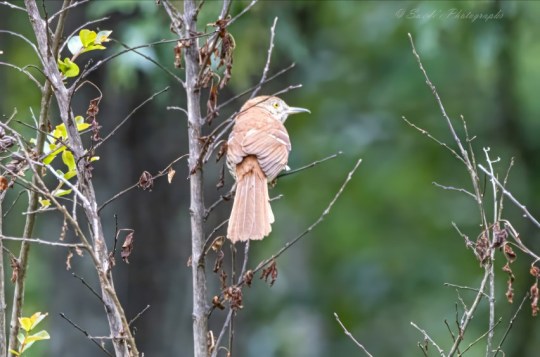
This picture of a brown thrasher (Toxostoma rufum) brings thoughts of peacefulness and solitude.
"Brown Thrashers are accomplished songsters that may sing more than 1,100 different song types and include imitations of other birds, including Chuck-will’s-widows, Wood Thrushes, and Northern Flickers." - allaboutbirds.org
@birdcounter
You know, the photographs that I post here are not quite a vivid as the same photographs that I post at my pixel's gallery, because here, I reduce the size of the photos and usually make a slight reduction in the quality of the photos to make them easier to load.
Take a look:
https://swede1952-photographs.pixels.com
#photo#photography#photographer#photographylovers#birds#birdwatching#birdsphotography#birds of north america#birdlovers#birdphotography#birds nature#brown thrasher#backyard birds#bird watching#birding#bird photography#birdingphotography#bird#birbs
10 notes
·
View notes